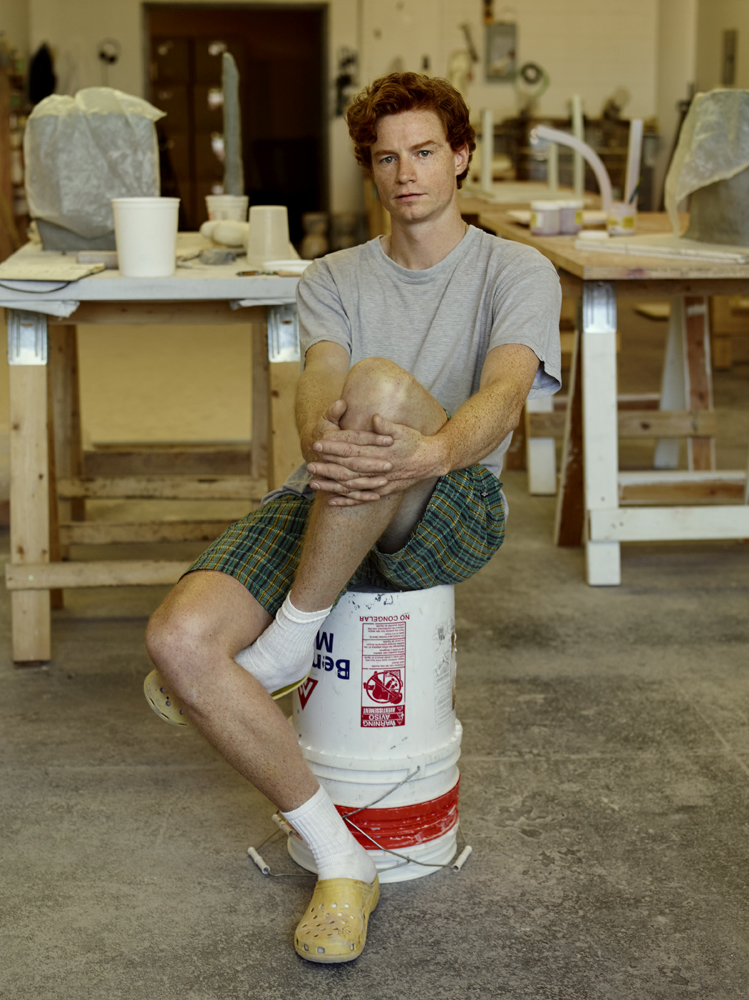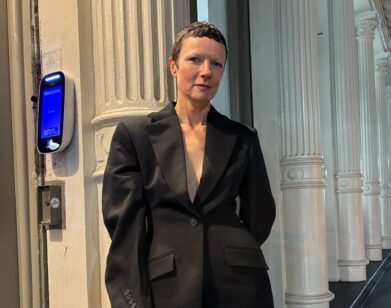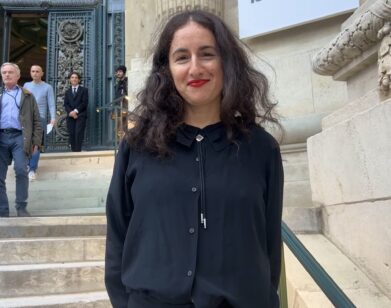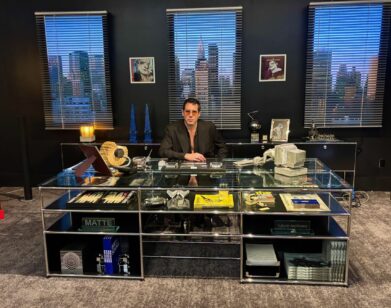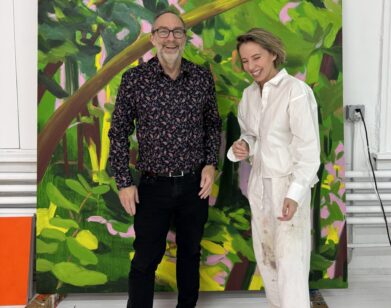Jesse Wine
Visiting the sparse, sun-drenched Bed-Stuy, Brooklyn, studio of Jesse Wine, a British artist who works predominantly in clay, feels a bit like poring over a kind of late-capitalist archaeological dig. Thick rust-colored tiles, assembled in grids on tables, serve as bases for his new large-scale ceramic works. There are disembodied limbs rising ominously; elegant abstract forms that reference 20th century modernist sculpture; and a single Reebok Classic sneaker, a recurring motif of the artist’s.
Since graduating from London’s Royal College of Art in 2010, Wine has grown widely celebrated for his sculptures’ sly wit and introspective observations on human behavior. Less than a year after relocating to New York City, the 33-year-old artist also seems to be tuning in to the social and political currents fomenting on both sides of the Atlantic. “I don’t really identify as a political artist,” he says. “But my new work has become somewhat politicized by the events of this year and the extreme rhetoric we’re hearing.” Wine, who is currently preparing for a solo exhibition at Los Angeles’s Parrasch Heijnen Gallery in the spring, employs the vernacular of familiarity—household vessels, food, sneakers—to create striking and often dystopian totems. A pair of oversized hands, glazed to look like an ancient relic and sliced off at the wrist, symbolizes a kind of evolutionary regression on account of their anatomical defects. “There are no opposable thumbs,” he points out. “These are the very things that set us apart as a human species, and to remove them is a way of suggesting that we are not behaving like humans at this moment. We don’t seem to have learned from our recent past.”
Another work, somewhat reminiscent of the late American artist Ken Price, employs a series of abstract, otherworldly forms to depict human legs traversing through a morasslike terrain. The work’s bright-orange and gray palette further emphasizes the notion of disorder. “The ground that we’re walking through today is so unfamiliar,” Wine says. “Take Brexit. Everyone is second-guessing the way forward.” Not that Wine is only trading in clear-cut social metaphors. Some of the artist’s highly idiosyncratic pieces reference seminal artists such as Barbara Hepworth and Giorgio de Chirico, while also offering wry, open-ended, and often lyrical observations on contemporary culture. “Clay is a very emotional material,” Wine says. He’s careful to make a clear distinction between his ceramic work and its typical associations with the craft of pottery. “Calling me a ceramicist is a complete misinterpretation of the work,” he asserts. “It actually just doesn’t matter that the work is made out of clay; it’s not a conceptually important decision for me. This medium allows me to make work that feels very generous and open.”

